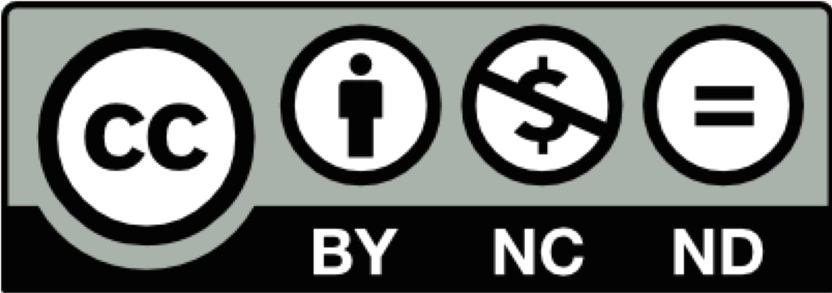This work describes specific features, basic stages, and dynamics of the eurointegration process of Poland. The objective of this research is to clarify peculiarities of the process of European integration of Poland, in particular, the analysis of the internal policy (which is converting of different spheres of public life aimed at compliance with the European standards) as well as foreign policy (diplomatic negotiations with the EU structures and participating in international organizations as a factor of European integration acceleration) constituents. The systemic and structural, comparative, and historical methods of research were used. It is determined that the way of European integration of Poland lasted about fifteen years. During this time, the state carried out the reforms practically in each sphere of public life in order to follow the Copenhagen criteria. As for the major events of this process, it is possible to include: the signing of the European Association Agreement in 1991 which launched the systematic dialogue between Poland and the EU and assisted social transformations in the country; the summit in Copenhagen in 1993 proclaimed that the states who signed the Agreement can become full-fledged members of the European Union meeting certain criteria; an official request for membership in the EU in 1994; launching of official negotiations between the parties in 1998; entering of the Republic of Poland the European Union in 2004. During the years of the integration Polish-Lithuanian Commonwealth concentrated the efforts both on changes in the domestic policy of country (economic, judicial, institutional and other reforms) and on a collaboration of the regional same as the collaboration of international levels (participating in the Vyshegrad association, entering NATO, collaboration within the Weimar triangle etc). For Ukraine, the experience of joining the EU by our western neighbor, Poland, is extraordinarily topical, as the analysis of positive and negative moments of this process can accelerate affiliation with the Euroatlantic structures.
1. Basarab M. B. Dosvid yevropeiskoi intehratsii Polshchi: perspektyvy dlia Ukrainy: avtoref. dys. na zdobuttia nauk. stupenia kand. polit. nauk: spets. 23.00.01 „Teoriia ta istoriia politychnoi nauky” / M. B. Basarab. – K., 2004. – 16 s.; 2. Bilianskyi O. Problema vyboru ta priorytetnosti intehratsiinoho vektora Respubliky Polshcha (1989-1991) / O. Bilianskyi // Ukraina-Ievropa-Svit. Mizhnarodnyi zbirnyk naukovykh prats. Seriia: Istoriia, mizhnarodni vidnosyny. – 2012. – Vyp. 10. – S. 419-423; 3. Bocharov S. V. Osnovni napriamky ta problemni pytannia ofitsiinykh perehovoriv shchodo pryiednannia Polshchi do YeS (1998-2002 rr.) / S. V. Bocharov // Skhid. – 2009. – № 1. – S. 66-71; 4. Bocharov S. V. Shliakh Polshchi do Yevropeiskoho Soiuzu : monohr. / S.V. Bocharov. – Donetsk: DonNU, 2011. – 270 s.; 5. Huralchyk B. Samit Yevropeiskoho Soiuzu v Kopenhaheni: polska ta uhorska perspektyva [Elektronnyi resurs] / B. Huralchyk. – Rezhym dostupu: http://www.sokin. info/ea/2003/3/20030305.html; 6. Demokratyzatsiia i Yevropeiskyi Soiuz: krainy Tsentralnoi i Skhidnoi Yevropy v pershomu desiatylitti XXI st. / [Adam Bodnar ... ta in.]; pereklad z anhliiskoi Oleksandra Kysliuka]. – Kyiv : Ukrainskyi pysmennyk, 2012. – 267 s.; 7. Dosvid krain Vyshehradskoi chetvirky na shliakhu do YeS: mozhlyvosti dlia Ukrainy: analitychni otsinky / [pid red. V. I. Andriiko]. – Uzhhorod: Vyd. V. Padiaka, 2003. – 237 s.; 8. Zviahina O. M. Vyroblennia novoho kursu zovnishnoi polityky Polshcheiu u 1990-i roky [Elektronyi resurs] / O. M. Zviahina. – Kyiv: Hileia, 2012. – Rezhym dostupu: http://www.archive.nbuv.gov.ua /portal/Soc_Gum/Gileya/ 2012_60/Gileya60/ I43_doc.pd.; 9. Konstytutsiia Respubliky Polshcha vid 2 kvitnia 1997 roku. – [Elektronnyi resurs] – Rezhym dostupu: http://www.sejm.gov.pl/prawo/konst/ rosyjski/kon1.htm; 10. Kopenhahenski kryterii chlenstva v Yevropeiskomu Soiuzi (inform-analit. dovidka) [Elektronnyi resurs] – Rezhym dostupu: http://www.mfa.gov.ua/ua/page/open/id/774; 11. Kopiika V. V. Yevropeiskyi Soiuz: istoriia i zasady funktsionuvannia: navch. posib. / V. V. Kopiika, T. I. Shynkarenko; za red. L.V. Huberskoho. – K.: Znannia, 2012. – 759 s.; 12. Kril M.M. Istoriia krain Tsentralno-Skhidnoi Yevropy (kinets KhKh – pochatok KhKhI st.): navch. posib. / M.M. Kril. – K., 2008 – 287 s.; 13. Lozhechkin V.S. Etapy yevropeiskoi intehratsii Respubliky Polshcha (1989 – 2004 rr.) / V. S. Lozhechkin // Nauka. Relihiia. Suspilstvo. – 2009. – № 2. – S. 49-53; 14. Tymkiv Ia. Teoriia i praktyka suchasnoi yevropeiskoi polityky bezpeky: pryklad Polshchi: navch. posib. / Ia. Tymkiv. – Lviv: Vydavnytstvo Lvivskoi politekhniky, 2011. – 224 s.; 15. Europe Agreement establishing an association between the Europe an Communities and their Member States, of the one part, and the Republic of Poland, of the other part // Official Journal L 348. – 1993. – 31 desember. – P. 0002–0180; 16. Freedom in the World 2010 [Elektronnyi resurs]. – Rezhym dostupu: http://www.freedomhouse.org/ sites/default/ files/inline_images/FIW%202010%20Booklet--Final.pdf; 17. Ryszard Zięba. Główne kierunki polityki zagranicznej Polski po zimnej wojnie / Ryszard Zięba. – Wyd. 1. – Warszawa: Wydawnictwa Akademickie i Profesjonalne, 2010. – 220 s.
